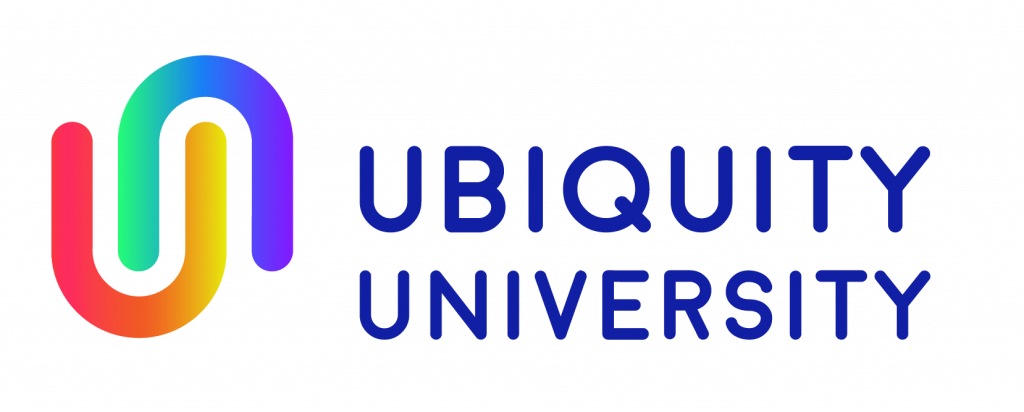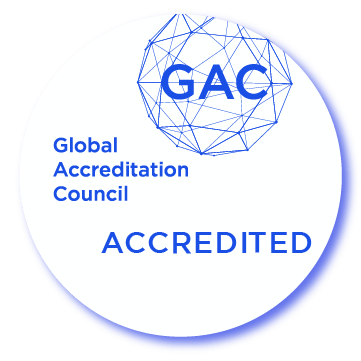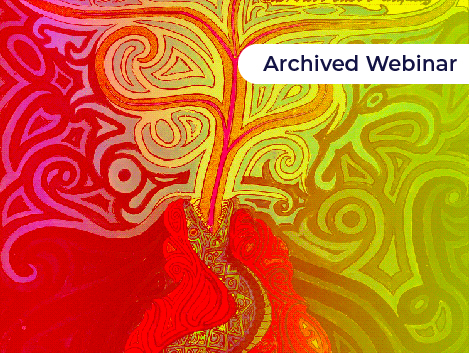
[vc_row][vc_column][vc_column_text]
Course Description:
The Red Book: A Record of the Soul’s Journey of Carl Jung records Jung’s journey into the Beyond, the deeper realm of the collective unconscious between the years 1913 to 1930: a non-personal psychic realm where nothing of personal identity or experience lives. It is the land of the forgotten gods that come in dreams and visions, the energies that want to speak with us, which are cut off by our rational life. This journey needs a companion. Jung was protected and helped by a sensitive woman called Toni Wolff, helping him make sense of his visions and struggles. This was the basis of all Jung’s work in the future. He was not the hero of his task; rather his work is based on relatedness. The foundation of Jung’s work is therefore Eros or love. In this way we introduce the Red Book.[/vc_column_text][/vc_column][/vc_row]
[vc_row][vc_column][vc_tta_tabs][vc_tta_section title=”Webinar 1″ tab_id=”1572368968787-1d920deb-78de”][vc_column_text]Session One: Initiation and How The Red Book Began
The Red Book is a record of Jung’s journey into the Beyond, his descent into the darkest and most dangerous regions of the psyche. This realm is usually called the collective unconscious, or objective psyche, because it is the repository of the memory of the human race and its most ancient and eternal roots; it holds the knowledge of the Cosmos to its furthest and deepest extent. This foundation, within us all, is where we drink from the waters of life and wisdom, if we have been made strong through conscious work and can find the little door in our soul that leads there. The Red Book describes such a journey. The book is beautifully hand written (though there is a printed translation of the script in the published edition) with many paintings – which are the images coming out of Jung’s psyche into consciousness. We will look at some of these. As stated before, The Red Book was started in 1913 and worked on until 1930. At this point Jung discovered his destiny and the book had fulfilled its function. It lay untouched in a bank vault for many years, as Jung’s family did not approve of its publication. It came into public view in 2009.
Carl Jung was a psychiatrist by training, but his interest and experience of the inner space of the collective unconscious gave him the added dimension of scientist, simply because he recorded in faithful detail his experiment with life. Add to this the mystical dimension of Jung’s nature. In The Red Book, he encounters such biblical figures as Elijah and Salome, the old pagan gods, the demons and devils, the heavenly dove, the stars in the universe, strange forces and energies – he takes us into the mythological world.
He saw first hand the dangers of the power of the collective unconscious and what happened when it overwhelmed the consciousness of the individual. Jung learnt to be cautious, emphasising that this soul journey was not to be taken alone. We find this approach in the other great western journey of the soul, that of Dante’s Divine Comedy– where Dante is accompanied by the poet Virgil through the fires of hell, through devastating experiences, to find, at last, the divine Beatrice – his soul. Like Dante, Jung had a companion: but in keeping with the new development of the feminine in the early part of the twentieth century, his companion was a woman. This was Toni Wolff who listened and dialogued with him to make sense of his visions. In this most intense period Toni visited him everyday and was his guide through these experiences, which he found difficult to contain at times. The Red Book is compiled from the notes he made of psychic events during this period of his life.
The joint venture of Jung and Wolff was blessed by the unconscious when they made a visit to Ravenna. They entered the baptistery, or piscina, the place in the church where the ritual of baptism is performed. The walls were covered with exquisite glistening mosaics, which they discussed for about half an hour. They were aware of a strange blue light that bathed that part of the church and surrounded them. Both wanted pictures of these mosaics to take home to study further but could not find any. Jung returned to Zurich and asked a colleague, who was going to Ravenna, to find pictures of the mosaics for him. When the colleague returned he said that the mosaics that Jung and Wolff had seen together did not exist. In fact, they had been destroyed in a fire some hundreds of years previously and Jung and Wolff had had a simultaneous vision. We look into this and describe how it was a blessing on their work together on their voyage through the events of The RedBook. We see that masculine heroism plays little part along the journey. The underlying principle of Jung’s journey into the Beyond is relatedness or Eros. This book becomes the foundation of Jung’s future work, as he wrote at the beginning of The Red Book:
“THE YEARS OF WHICH I HAVE SPOKEN TO YOU, when I pursued the inner images, were the most important of my life. Everything else is to be derived from this … My entire life consisted in elaborating what had burst forth from the unconscious and flooded me like an enigmatic stream and threatened to break me … the numinous beginning, which contained everything, was then.”
Jung’s task became clear after a predictive dream just before the First World War in 1914. He says: “I had to try and understand what had happened and to what extent my own experience coincided with that of mankind in general. Therefore my first obligation was to probe the depths of my own psyche …This work took precedence over everything else.” Jung’s record of the soul’s journey, expressed in The Red Book, shows us the priority he gave to this quest.[/vc_column_text][/vc_tta_section]
[vc_tta_section title=”Webinar 2″ tab_id=”1572368968787-b32ffd52-8934″][vc_column_text]Session Two: The Spirit of the Times and the Spirit of the Depths
We look deeply into the struggle of the opposites in Jung’s nature, which amounts to a psychological crucifixion. He discovers the dual nature of God which he expresses in this way: “God has a terrible double aspect: a sea of grace is met with a seething lake of fire, and the light of love glows with a fierce dark heat … it burns but gives off no light. That is the eternal as distinct from the temporal, gospel: One canlove God but must fear him.”
Jung was the son of a Swiss pastor and inherent in The Red Bookis a dynamic relationship to religious ideas and images, including disgust and resistance to some of Christianity’s unwholesome history and practice. If we have such a resistance, it becomes useful when studying The Red Book. It creates a fire to work with, to try and discover the dark Eros, the dark love, which mingles with the ‘light of love’ or that ‘sea of grace’ that Jung has spoken of earlier.
In the early part of the book Jung speaks of two opposites, the spirit of the depths and the spirit of the times and how the psyche pushes him into the conflict between these two. He says: “I have learned that in addition to the spirit of the time there is still another spirit at work, namely that which rules the depths of everything contemporary.” Jung says: “I long sought to hold that other spirit away from me. But I did not consider that the spirit of the depths from time immemorial and for all the future possesses a greater power than the spirit of the time, who changes with the generations. The spirit of the depths … took away my belief in science, he robbed me of the joy of explaining and ordering things, and he let devotion to the ideas of this time die out in me. He forced me down to the last and simplest things.”
In this way, through this conflict, Jung’s ego, which embraced fully and warmly his life and ideas, was reduced and forced to accept the knowledge of the spirit of the depths. At this period of his life, on the outer level, we see him give up his professorship to devote his energies to the exploration of the psyche and the powerful conflicts in the soul.
On his journey through the Beyond, Jung encounters the World Tree. In mythological terms, it is the tree that Odin, the god of Norse mythology, hung on for three nights and three days. Odin sacrificed the sight in one eye, to gain insight, which is why he is represented wearing a patch over that eye. Jung too, was forced to sacrifice his outward looking spirit of the times for the profound spirit of the depths. This is recorded in The Red Bookwhen he says: “I remain silent and hang high above the ground on the swaying branch of the divine tree, for whose sake the original ancestors could not avoid sin. My hands are bound and I am completely helpless. So I hang for three days and three nights. From where should help come?”
The tree is a symbol of the wooden cross of the Christian myth, so the crucifixion takes its form from the World Tree. The vertical trunk of the tree aligns with the upward movement of the cross towards the light and the downward movement towards the darkness. The horizontal branches, the symbol of the wide earth, provide the opposing tension of human life and suggest an integration of the two. How are we to work with these two demanding tensions? We learn how Jung worked with, and resolved, these two tensions.
The neglect of the body in traditional Christianity, and thus of the feminine, has left us the slippery vertical, to scale the heights to Heaven against gravity, or slip into Hell quite easily. The horizontal is the symbol of the far-reaching earth and feminine spirit where we live and breathe our lives, which can hold the tension of the vertical through our experiences as human beings. We follow Jung’s soul to find his own response to this problem of existence.[/vc_column_text][/vc_tta_section]
[vc_tta_section title=”Webinar 3″ tab_id=”1572368998718-28bbf705-d841″][vc_column_text]Session Three: The Meeting with the Anima or Soul Image
The anima is often seen as the feminine soul image of the man. This is only true in a personal sense, but on a wider and deeper level the anima, or anima mundi, is the soul of the world. Through his scientific knowledge (for Jung was the first to put forward the idea of the feminine soul image of the man, who he called the anima) he felt that he could probe into his anima. He saw himself as ‘in control’ through psychic knowledge. Jung was a man of his time and started off with the requisite confidence in male rationality. What he discovered in the Beyond was that the anima was an independent energy within the psyche, that it was actually she who controlled him. He then saw the great necessity of relating to the soul, or anima, rather than seeing her as an object of research. He turned his face towards this great feminine entity but had to surrender his conditioned way of thinking and meet the anima on her terms and not his. This shakes him to the core.
The anima shows Jung one aspect at a time – for who could face the terror of the whole of the feminine world soul at once? He meets Salome, the blind anima, who in The Red Bookis the daughter of Elijah. As Jung is transformed through his journey, so she is too, and regains her sight. In this event we discover that the world soul needs man to transform her, just as much as she transforms man. The world soul is always evolving, as are men and women, in this inter-related way. The link between humanity and the gods and their mutual evolution is a thread of the book. Jung confronts Salome through masculine resistance and disgust, saying that she is a murderess for she asked for the head of John the Baptist on a platter. But she insists, as does Elijah, that she performed a holy task and Jung is forced to wrestle with this paradox and not just think he is above things and can make arbitrary judgements.
Jung journeys on and needs shelter for the night. He knocks on the door of an old fairy-tale castle. The old scholar who lives there gives him a bed for the night. As he tries to go to sleep Jung is overtaken by fantasies. He thinks the old man must have a daughter who is imprisoned against her will. The fantasies get on Jung’s nerves and he tries to banish them. He calls these ‘pulp fiction’ – stories from a cheap lending library, which are beneath him. He just can’t get rid of the images, and then the daughter appears, just as he has imagined her: a pale, blond, tragic looking heroine, who is indeed imprisoned by her father. His self-disgust at this experience and the fantasies flowing with it, are boundless. They are also very humorous. He is forced to face his assumptions and high and mighty attitude; he too, is a man like any other and not special in this respect.
His great test comes later in The Red Bookwhen he encounters a veiled woman who stands next to a murdered child, a little girl. Jung is angry about this murder but the veiled woman asks him why he is angry – saying: a man has done this, and you are a man. Jung takes a more humble attitude when he realises he is made of the same flesh and blood as the murderer. The veiled anima asks him, as a man, to atone for this terrible murder, by a seemingly cruel and bloody action, which Jung refuses to do – saying it is a blasphemy. He finally does this, but it almost makes him vomit. When he has atoned for the murderer the anima lifts her veil so he can look into the face of his own soul. He bows to her with great respect and reverence. The wonderful human temperament of Jung shows in these struggles with the anima figures, which we can take to be aspects of the world soul.[/vc_column_text][/vc_tta_section]
[vc_tta_section title=”Webinar 4″ tab_id=”1572369013385-0f78090a-abfa”][vc_column_text]Session Four: Philemon – Jung’s Guide
Philemon is an inner guide who Jung dialogues with during a large part of his life. Jung paints an image of Philemon, which is in The Red Book: a medieval figure in a strange landscape with large widespread wings that tell us that he is a spirit. Philemon says to Jung that he assumes that he thinks his own thoughts, but this is simply not true. Thoughts are objects and entities and they come to Jung, they are independent and enter his mind. As such they do not belong to him; just as people who enter the room or birds that fly in the trees, are also not owned by Jung.
There are many long dialogues in the book between Jung and his guide. He looks on Philemon with respect and asks him for guidance about the greatest mysteries. After Jung’s great suffering within the events of The Red Bookit is Philemon who leads him towards an understanding of the souls of the dead, and their role in life. There is a dialogue between Philemon and these souls that Jung listens to. His guide is also a magician and tests Jung out throughout the journey in the Beyond.
Jung records his own experience of the souls of the dead after an event at this own home. One night, the bell of the house was ringing furiously and when Jung opens the door, souls crowd into his house, deepening the atmosphere and in his book The Seven Sermons to theDeadhe writes about this experience.
It is Philemon who eventually shows Jung the terrible reality of God. He says: “Abraxas is the God who is difficult to grasp.” Abraxas is the name of God in which all aspects of creation and destruction are embodied and active. Jung asks how he should understand this God? But Philemon replies that God is not to be understood, he can only be known. Then Philemon takes Jung on a journey to understand a mystery. He says: “Man is a gateway, through which you pass from the outer world of Gods, daimons, and souls into the inner world, out of the greater into the smaller world. Small and inane is man, already he is behind you …” From this we might feel, as it is the later part of The Red Book, that Jung has gone beyond his beginnings and lives in the spirit of the depths, so that the spirit of the time is now only a relative value of his history. Philemon continues: “At immeasurable distance a lonely star stands in the zenith. This is the one God of this one man, this is his world … his divinity. … This star is the God and the goal of man … To this one God man shall pray. Prayer increases the light of the star, it throws a bridge across death.”
Jung is then visited by a dark form with golden eyes who says: “Your light shines at night. Your solar nature departs from you and your stellar nature begins.” The solar is the heroic and the stellar is the feminine. Then Philemon shows him the meaning of these words in a vision of the night sky. He sees that “the sky had the form of a woman and sevenfold was her mantle of stars and it completely covered her.” This is the Great Mother or the anima mundi, the soul of the world. She is not split into aspects like the veiled woman, the blonde heroine or Salome – but is a vision of wholeness. This is not the end of The Red Book. Jung must continue this great quest for more is demanded of him after this moving vision of the feminine and the stellar world.[/vc_column_text][/vc_tta_section][/vc_tta_tabs][/vc_column][/vc_row][vc_row][vc_column][vc_column_text]
Requirements for enrolled Degree students to earn 1 Credit:
- Required Reading listed below
- End of course essay regarding the learnings in this course using APA style.
-
-
- For BA students – 6-9 pages in length
- For MA students – 10-15 pages in length
- For PhD students – 20-25 pages in length
-
Required Reading:
• C G Jung, edited by Sonu Shamdasani, The Red Book, Liber Novis
(This is the original facsimile edition with text and all the paintings. It is a very beautiful large format book (39cm x 30cm) and expensive – at least $100, though you may pick up a second hand one)
• C G Jung, edited with an introduction by Sonu Shamdasani, The Red Book, Liber Novus, A Reader’s Edition
(This edition is text only and quite good. Combine this with the images found on the internet by googling ‘Red Book pictures’)
• Conceived and edited by C G Jung, Man and His Symbols
• Nan Savage Healy, Toni Wolff and C G Jung: A Collaboration
• C G Jung, Answer to Job (A slim volume: an extract from Volume 11 of Jung’s Collected Works)
• Marie-Louise von Franz, The Feminine in Fairy Tales. (A good introduction to the feminine aspect of the psyche)
• Stephan Hoeller, The Gnostic Jung and the Seven Sermons to the Dead of C G Jung
Faculty
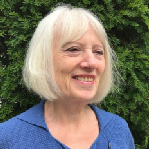 Brenda Crowther is a Jungian analyst and writer who has lectured extensively in the UK, Switzerland and Germany, and published many articles. She initially studied painting in London, has exhibited her work, and taught for some years at Brighton University. She has an MA in French Philosophy and studied to be a Jungian analyst in London and a depth psychologist in Switzerland. She lives in the medieval town of Tournus, Burgundy, in eastern France. Brenda has studied The Red Book since it was published in 2009, and from the very beginning it filled her with wonder. She has given seminars and lectures on this wonderful book, which has also inspired her studies in psychological alchemy as a path of transformation. In London she held a reading group of the book, where every word was read aloud, which lasted for seven years. At present she is preparing a book on the subject of alchemy woven into her individual and transformative path through life, and inspired by The Red Book.
Brenda Crowther is a Jungian analyst and writer who has lectured extensively in the UK, Switzerland and Germany, and published many articles. She initially studied painting in London, has exhibited her work, and taught for some years at Brighton University. She has an MA in French Philosophy and studied to be a Jungian analyst in London and a depth psychologist in Switzerland. She lives in the medieval town of Tournus, Burgundy, in eastern France. Brenda has studied The Red Book since it was published in 2009, and from the very beginning it filled her with wonder. She has given seminars and lectures on this wonderful book, which has also inspired her studies in psychological alchemy as a path of transformation. In London she held a reading group of the book, where every word was read aloud, which lasted for seven years. At present she is preparing a book on the subject of alchemy woven into her individual and transformative path through life, and inspired by The Red Book.
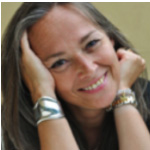 Gyorgyi Szabo, PhD serves as Ubiquity University’s Dean of Graduate Studies and Director of Research. She was a Co-Founder and Academic Dean of the Ervin László Center for Advanced Study (ELCAS). She served as Director of Research and Development of the Center’s Exploratoria Program. She was co-creator of the WorldShift International Foundation, and the WorldShift 2012 organizations, and currently serves as Member of the Advisory Board of the Memnosyne Foundation. In 2012, she founded and now serves as a President of UniverSoul, a Hub for Conscious Evolution in Paris, in association with Barbara Marx Hubbard. Gyorgyi lectures worldwide and has published papers in The Scientific and Medical Network’s Review, The Shift Network, and World Futures: The Journal of New Paradigm Research. She translated from Italian to English The Basic Code of the Universe: The Science of the Invisible of Physics, Medicine and Spirituality by Dr Massimo Citro.[/vc_column_text][/vc_column][/vc_row]
Gyorgyi Szabo, PhD serves as Ubiquity University’s Dean of Graduate Studies and Director of Research. She was a Co-Founder and Academic Dean of the Ervin László Center for Advanced Study (ELCAS). She served as Director of Research and Development of the Center’s Exploratoria Program. She was co-creator of the WorldShift International Foundation, and the WorldShift 2012 organizations, and currently serves as Member of the Advisory Board of the Memnosyne Foundation. In 2012, she founded and now serves as a President of UniverSoul, a Hub for Conscious Evolution in Paris, in association with Barbara Marx Hubbard. Gyorgyi lectures worldwide and has published papers in The Scientific and Medical Network’s Review, The Shift Network, and World Futures: The Journal of New Paradigm Research. She translated from Italian to English The Basic Code of the Universe: The Science of the Invisible of Physics, Medicine and Spirituality by Dr Massimo Citro.[/vc_column_text][/vc_column][/vc_row]
Pricing:
- BA Level: $100
- MA Level: $200
- PhD Level: $300
- Audit-No Credit: $80 (no credit, access to course materials only)
Our shopping cart is simple and easy to understand. If you do not have a user account, you will be able to create one upon purchase. Save your username and password as you will need it to login to access course materials later. For more detailed, step-by-step instructions you can review our tutorial How to Purchase a Course. Again, if you experience any issues, please email our Registrar at registrar@ubiquityuniversity.org.
Archived Webinar Contact Information:
Archived Webinars are completely on-demand for your convenience. If you have questions or require additional assistance, you may click the “Chat” button on the lower, left-hand side of the screen, and submit your question. Our help desk will respond as soon as possible.
